INTRODUCTION
With recent economic growth and changing life style, the incidence of coronary artery diseases in Korea has increased remarkably1,2). This rather rapid increase has been at least partly attributed to westernized dietary habit, such as increased intake of animal fat as well as many other factors, including extended medical care through the medical insurance system.
Cardiovasular disease is the leading cause of mortality in Korea and increasing number of people in our country are expressing their concern about the coronary artery disease. However, there have been no systematic investigations whether or not the incidence is really increasing rapidly, what the pattern of coronary artery diseases in this country is and whether there is any difference in the prevalence and patterns compared to those in western countries.
Since little data are available, I would like to discuss the general features of coronary artery diseases in this country, especially in respect to the indicence, patterns including risk factors, clinical spectrum, changing diagnostic and therapeutic modalities and different aspects from those of western counries, based upon experiences of the Seoul National University Hospital during the past 10 years.
INCIDENCE
It is generally accepted that the number of coronary artery disease in Korea has been steadily increasing, though there hasn’t been any large-scale research on its actual prevalence. According to the data from Seoul National University Hospital, while the total number of admissions to the Internal Medicine Department in the year 1990 approximately doubled from that of 1979, the number due to acute myocardial infarction and angina increased 4 and 6.2 times respectively during the same period2). Similar findings were also observed in the statistics of the Medical Insurance Corporation, suggesting that this trend is rather nationwide rather than confined to a certain hospital3).
RISK FACTORS
Although systematic investigations upon prevalence of risk factors and longterm prognostic factors of coronary artery disease in Korean adults are lacking, our experience with 404 hospitalized patients of acute myocardial infarction showed a relatively high prevalence of correctible risk factors. Smoking was the most highly associated (64.7%), followed by hypertension (36.7%), hypercholesterolemia (16.6%) and diabetes (15.0%)4).
Serial previous observations5–8) at our hospital upon the levels of serum lipid in Korean adults were reviewed retrospectively. The level of serum cholesterol has increased gradually over the past 30 years in Korean adults and such a trend was similar both in the male and female population (Fig. 1). According to the nationwide joint research carried out by the Korean Society of Circulation in 19909), serum cholesterol level in normal Korean adults (185±47.5mg/dl, mean±SD) was somewhat higher than expected and was pretty close to that of Caucasians (Table 1). Fortunately, however, there has been a growing public interest in the serum choleterol levels and its association with atherosclerotic cardiovascular diseases.
During the relatively short period of time between August 1991 and August 1992, our Department found 52 cases of familial hypercholesterolemia among 25 families, which had been considered extremely rare in Korea10). Clinical features of patients with familial hypercholesterolemia were similar to those of western countries and it is very important to find such patients and family members as early as possible, since early treatment is needed to prevent those patients from premature coronary artery diseases and related cardiovascular complications.
We have also examined several other plasma lipid levels in healthy controls and coronary artery disease patients, such as high density lipoprotein cholesterol (HDL-cholesterol), apolipoprotein A1, B, E and lipoprotein (a), which have been considered to be closely related to coronary artery disease11). Of particular interest was that lipoprotein (a), thought to have a role in developing cornonary artery disease due to its structural similarity to that of plasminogen, appeared to be an independent risk foactor even in coronary artery disease patients whose plasma cholesterol levels were below 300 mg/dl (Fig. 2)12).
Other major risk factors, like smoking and hypertension, are still much higher in Korea than those in developed countries and their influence cannot be measured with small scale studies. However, every effort should be made to reduce and eliminate modifiable risk factors through public education, since the risk for coronary artery disease increases sharply when these factors are accompanied by other risk factors such as hypercholesterolemia or diabetes.
DIAGNOSIS
1. Noinvasive diagnostic Methods
There has been remarkable progress in the diagnostic modalities for coronary artery disease especially in the fields of noninvasive diagnosis such as echocardiography, radionuclide myocardial perfusion scan etc.
Exercise electrocardiogram, one of the most popular and classical stress tests, has the diagnostic sensitivity and specificity of about 70 to 80%. However, it has a shortcoming in estimating the exact anatomical location of coronary arterial lesion13). In contrast, myocardial perfusion scan, using either thallium-201 or Technetium-99m MIBI single photon emission tomography (SPECT), not only shows much higher sensitivity and specificity (Table 2) but is very useful in estimating anatomic location of coronary artery lesion and the extent of ischemic myocardium, finding viable myocardium from the infarcted lesion and assessing the effects of reperfusion by percutaneous transluminal coronary angioplasty (PTCA) or coronary artery bypass graft (CABG)14). Recently, pharmacological stress agents, such as dipyridamole and adenosine, are widely used in myocardial perfusion scan with comparable diagnostic yield, and such stresses are especially helpful to evaluate the patients with limited exercise capacity15). Dobutamine is another stress agent that is widely used with echocardiographic methods.
2. Invasive Diagnostic Method-Coronary Arteriography
Coronary Arteriography is a useful and essential test not only for assessment of the severity of coronary arterial lesion and global and regional myocardial function, but also for the management and estimation of long-term prognosis. In order to evaluate the anatomical patterns of coronary artery disease in Korea, we retrospectively reviewed 2515 cases (82.1%) of coronary arteriographies that were performed under the suspicion of coronary artery disease among 3,062 coronary arteriographies done at Seoul National University Hospital from March, 1984 to July, 1992.
1) Fixed Coronary Artery Lesions
Among 2,515 cases of coronary arteriographies, performed under the suspicion of coronary artery disease including atypical chest pain, males were more prevalent with a ratio of 2.4:1, and most patients were in their fifties (37.9%) and sixties (31.8%). Significant fixed stenosis (more than 50% luminal diameter norrowing) was found in 1659 cases (66.0%) of among 2515 patients as a whole, 60.2% of angina pectoris patients (1869 cases) and 83.0% of myocardial infarction patients(636 cases), respectively.
The extent of coronary arterial lesions in patients with angina pectoris was one vessel disease in 47% followed by two vessel disease (27%), three vessel disease (20%) and left main disease (6%)(Fig. 3A). Patients with myocardial infarction demonstrated a similar pattern of arterial involvement: one vessel disease (54%), two vessel disease (27%), three vessel disease (17%) and left main disease (2%)(Fig. 3B). Although these results were generally similar to the reports from other countries. However, compared to those in western countries, there seems to be a tendency toward somewhat higher prevalence of patients with isolated atherosclerotic left coronary ostial stenosis without apparent secondary causes (11 cases; 0.44% of all the patients who undertook coronary arteriography18)) and acute myocardial infarction patients with normal coronary arteriography or insignificant coronary arterial narrowing (17% of all the infarction patients)19,20).
2) Coronary artery spasm
Since our Department began to have an interest in the coronary artery spasm from 1985, we were able to find 157 patients with either spontaneous or provoked coronary artery spasm, documented on coronary arteriography during the recent 7 years (1985-July 1992). The finding that the patients with coronary artery spasm comprise 6.2% of all patients who undertook coronary arteriography during the same period demonstrates a definitely high incidence of the coronary artery spasm in Korea and is one of the major different aspects in the coronary artery disease pattern from those of western countries19,20).
Early morning chest pain, 59.1% of all the patients, was the most typical clinical manifestation and typical exertional chest pain as in exertional angina was also observed in a significant portion of the patients (12.7%)(Fig. 4). Therefore, provocative test for the coronary artery spasm is recommended in patients with clinical suspicion who do not show significant coronary arterial lesion on the coronary arteriography.
ST segment elevation was the most frequent (60.8%) electrocardiographic change during coronary artery spasm, followed by less specific changes such as ST segment depression (13.8%), T wave change only (9.2%) and even no significant change (16.2%). These findings suggest that ECG changes during coronary artery spasm might closely relate to the extent and location of myocardial ischemia induced by the spasm. Therefore, it dosen’t seem to prudent to rule out the presence of the coronary artery spasm only because of absent electrocardiographic changes during chest pain.
Coronary artery spasm usually occurred in a single coronary artery and was most frequently observed in right coronary artery (55%), followed by left anterior descending artery (36%), left circumflex artery (7%) and left main coronary artery (2%) in decreasing order. However, the spasm also occurred multifocally, involving two or more sities in a few cases (Fig. 5). Most spasms (64%) occurred at angiographically normal coronary arteries, but spasms were also observed at the sites of less than 50% coronary artery stenosis (20%) or significant (>50% luminal diameter) fixed stenosis (16%).
Provocative Test for Coronary Artery Spasm
Although intravenous injection of ergonovine has been widely used for the provocation of coronary artery spasm22), intracoronary acetylcholine, which is known to release EDRF (endothelial-derived relaxing factor) from the vascular endothelium, has also been introduced recently for the induction of the spasm during coronary arteriography23,24).
Provocation of spasm with acetylcholine can are safely performed in patients with moderate to severe hypertension in whom hypertensive effect of intravenous ergonovine may be harmful, and short duration of action enables tests of multiple vessels. However, it also has a few shortcomings. In our experience, not only intracoronary injection of acetylcholine frequently causes sinus arrest, marked bradycardia or atrial fibrillation, it appears to be somewhat less sensitive compared to intravenous ergonovine test. Moreover, because the morphologic pattern of induced coronary artery spasm was rather diffuse than focal, and was significantly different from those of spontaneous or intravenous ergonovine induced coronary artery spasm25) (Table 3), acetylcholin induced spasm might not be the clinically relevent spasm.
Thus, in order to resolve such problems related to acetylcholine provocation test and to reduce the risk associated with intravenous ergonovine test, we have recently developed a new method using intracoronary ergonovine injection to provoke coronary artery spasm. Further study will be needed to evaluate the usefulness of intracoronary ergonovine provocation test in patients with coronary artery spasm.
Coronary Spasm as a Pathogenetic Mechanism of Acute Myocardial Infarction
The incidence of acute myocardial infarction patients, who have normal coronary arteries or insignificant coronary artery stenosis, was quite quite high in our experience and comprised 87 cases (18.4%) among 473 patients. This incidence appears higher than previous reports from other countries19,20). Interestingly, seven of the 13 cases that underwent provocation tests for the coronary artery spasm demonstrated the spasm in infarct related arteries. These findings suggest that the coronary artery spasm may play an important role in the pathogenesis of the acute myocardial infarction, especially in Korea.
3) Other Cardiovascular Diseases with Coexisting Coronary Artery Lesions
The coronary artery disease associated with other cardiovascular diseases may influence the risk related to therapeutic modalities, especially to surgical procedures. Thus, we prospectively studied the incidence and patterns of associated coronary artery lesions in a few cardiovascular diseases where the presence of the coronary artery disease is crucial to the surgical management.
Valvular Heart Diseases
During the period between 1985 and 1992, a total of 297 patients who had valvular heart diseases and were older than 40 years of age, had coronary arteriography prospectively while performing cardiac catheterization. Since only 16 cases (5.4%) were found to have significant coronary artery stenosis and most (14 cases) of them had single vessel disease, it does not appear to be necessary to perform the coronary arteriography routinely in valvular heart disease patients without symptoms of coronary artery disease26).
Takayasu’s Arteritis
Takayasu’s disease is more prevalent in Oriental people and known to involve the coronary arteries. However, exact incidence and patterns of coronary arterial lesion remained elucidated. Between May 1986 and July 1992. a prospective study was performed and coronary arteriographies of 60 consecutive Takayasu’s arteritis patients were analyzed. Among them, significant coronary artery involvement was found in 26.7% of the patients. The pattern of the involvement was quite different from the atherosclerotic coronary artery disease in that coronary ostial lesions (left side in 22.7% and the right side in 18.2%) were more frequent, which was similar to the previous reports, suggesting aortitis is the important pathogenetic mechanism of the coronary arterial lesions. However, coronary arterial lesions, not fully explained by the aortitis alone, were also observed in the left anterior descending artery (36.4%), left circumflex artery (13.6%), and the right coronary artery (9.1%)(Fig. 6).
Taken together, because of relatively high frequency of coexistent coronary arterial involvement in spite of their age, coronary arteriography should be included as a part of evaluation in patients with Takayasu’s arteritis. Since the ostial lesions were frequent, CABG were frequently indicated27).
Arteriosclerosis Obliterans
In order to evaluate the incidence of coexisting coronary artery disease and its effects upon surgical treatment in ASO patients, we performed coronary arteriography in all ASO patients from 1991 to 1992, at the time of diagnostic peripheral arteriography. The coronary artery lesions were demonstrated in 66.7% among a total of 36 patients. Those patients who had coexisting coronary artery disease had a significantly higher rate of perioperative cardiovascular complications, compared to those with normal coronary arteries (Fig. 7). These findings indicate that coronary arteriography is recommended in preoperative evaluation of patients with arteriosclerosis obliterans.
TREATMENT
The treatment of coronary artery disease is very diverse and cannot be generalized. Here, I would like to focus on recent advances and applications in the treatment of coronary artery disease such as thrombolytic therapy after acute myocardial infarction, interventional procedures like percutaneous transluminal coronary angioplasty and coronary artery bypass graft surgery.
1) Thrombolytic Therapy
Since early recanalization of the thrombotic coronary artery after acute myocardial infarction has been demonstrated not only to decrease infarct size but also to reduce in-hospital and longterm mortality, thrombolytic therapy has become a standard form of therapy in patients within 6 hours after the onset of acute myocardial infarction, provided that there is no specific contraindication for thrombolytic therapy. However, in Korea, the proportion of patients who arrive early enough to receive thrombolytic treatment is still small as seen in our experience at Seoul Naional University Hospital, where only 17 percents of acute myocardial infarction patients were able to receive thrombolytic therapy. Considering that delayed visit to the hospital was the major cause (89%) of exclusion, public education of the general population and general practitioners, as well as improved patient delivery systems, are required. Recently, however, Oh et al29) reported that the proportion of patients who required thrombolytic therapy has been steadily increasing and, in the near future, more patients with acute myocardial infarct will be subject to thrombolytic therapy.
In Korea, two kinds of thrombolytic agents are available, selective agent rt-PA and nonselective agent urokinase, and the effects of each agent are known to be similar. According to our experiences using rt-PA at Seoul National University Hospital, patency rate on coronary arteriography was 83 percent and complications, mostly minor, were observed in 12 percent. Fifties were the most common age group with 39 males and 5 females. Most patients had acute anteroseptal myocardial infarction (63%). The time interval between the onset of symptoms and the arrival at hospital was 155 minutes on average and it was 267 minutes between the onset of chest pain and infusion of the thrambolytic agent. We had used a total dose of 100 mg per patient initially and changed to weight adjusted dose afterwards because of bleeding complications. Among 13 cases using urokinase, recanalization rate judged by the changes of cardiac enzymes was 62 percent, patency rate of the coronary artery on coronary angiography was 92 percent, and minor complications occurred in 2 cases.
2) Percutaneous Transluminal Coronary Angioplasty (PTCA)
The most significant advance in the treatment of the coronary artery disease since 1980 would be the interventional therapy such as ballon angioplasty etc. Percutaneous Transluminl Coronary Angioplasty (PTCA), developed by Grunzig in 1979 and improved remarkably thereafter, now is the popular interventional procedure even in this country, and its applications are gradually expanding. Total of 277 PTCA’s on 308 coronary lesins in 240 patients were performed at Seoul National University Hospital between April 1986 and October 1991. Single vessel lesion was 89.5 percent and multivessel lesion was 10.5 percent. Success rate was 89.2 percent among the total patients and 88.6 percent of the total lesion. Complication rate, including 8 cases of nonfatal myocardial infarction, was 5.8 percent and there was no mortality. During the mean follow-up period of 16.2 months after procedure, restenosis occurred in 90 lesions (33%), and second PTCA was done in 31 cases, while third PTCA was done in 3 cases and elective coronary artery bypass graft in 5 cases (Table 4). In the near future, coronary angioplasties for multivessel or complex lesions, ballon angioplasty of the completely occluded coronary artery or bypass-grafted artery are expected to increase gradually30,31).
A few other interventional therapies for stenotic coronary artery, like directional or extraction artherectomy, rotablator, laser angioplasty for the direct removal of artheroma of the coronary artery are now introduced in some selected cases, but restenosis is the major concern as in the case of the balloon angioplasty. The implantable stent, initially thought to reduce the incidence of restenosis, also demonstrates a comparable rate of restenosis to that of balloon angioplasty32).
3) Coronary Artery Bypass Graft (CABG)
Coronary artery bypass graft surgery has been proved not to improve long-term suvival in patients with multi-vessel disease and depressed left ventricular function, compared to that of medical treatments, but to improve quality of life in patients whose anginal pain cannot be effectively controlled with medical or interventional teatment33,34). Coronary artery bypass graft surgery has not been performed widely so far in this country, but the number of operations is steadily increasing, since the experience with CABG is not great, data regarding long-term patency rate et. are not available.
BASIC RESEARCH ON CORONARY ARTERY DISEASE
Because of the limitations, such as shortage of equipment and funds, basic research on coronary artery disease is still in an early stage in Korea, though a few clinical investigations have been performed with some results. Despite many difficulties, our Department has already had considerable interest in the basic experimental studies, such as studies regarding serum lipid that is a major risk factor of coronary artery disease, especially lipoperoxides, apolipoproteins and lipoprotein (a). Recently, the assay of the LDL receptor was also conducted in patients with familial hypercholesterolemia. We also have been performing in vivo studies about vascular endothelial function associated with coronary artery artery spasm that is frequent in our country35) and animal experiments about reperfusion injury after coronary artery occlusion. Additionally, a few papers have been published regarding not only hemodynamic36), electrophysiologic37) changes and left ventricular function38) associated with coronary reperfusion after occlusion but also the modification of the reperfusion injury by removal of oxygen-free radicals using catalase and/or superoxide dismutase39,40) and myocardial protection through ischemic preconditioning41,42). Studies about effects of the residual critical coronary artery stenosis after coronary reperfusion and retroperfusion into the coronary sinus during coronary artery occlusion upon the infarct size are also underway. Experimental studies, using small animals like rodents, have been focused on the left ventricular remodeling after acute myocardial infarction and its modification with exercise training and/or pharmacological agents. Despite some efforts and trial from our Department and other laboatories, most research activities are still far from adequate to accomplish international reputation. However, growing widespread interest in basic experimental research among young Korean investigators are very encouraging and promising results would be expected in the near future through financial investment and persistent efforts.
CONCLUSION
Within the scope of our limited experiences first, the incidence of coronary artery disease is rapidly increasing; second, the frequency of correctible risk factors like smoking or hypertension are relatively high; third, several aspects or features of coronary artery diseases, distinct from those in western countries exist in Korea such as coronary artery spasm and coronary arterial involvement in Takayasu’s arteritis.
Therefore, through extensive and systematic studies of epidemiological and clinical studies, basic data regarding the present status of coronary artery disease in Korea, such as the prevalence, clinical features or characteristics and natural history of coronary artery disease, should be gathered and reestablished. Simultaneously, public education for the primary and secondary prevention of coronary artery disease to modify the risk factors should also be made as a nationwide movement. As a part of these efforts, the Korean Society of Circulation not only had perfomed a nationwide cooperative study to establish the serum lipid levels in normal Korean adults but, in this year, is supporting another cooperative project for the registry and natural history of acute myocardial infarction. However, these efforts are by no means sufficient and cannot guarantee success without strong support from the government.
Taken together, we should have a special interest and fervour not only in the diagnosis and management of patients but also in the clinical and experimental researches to resolve the problems peculiar to coronary artery diseases of our country.




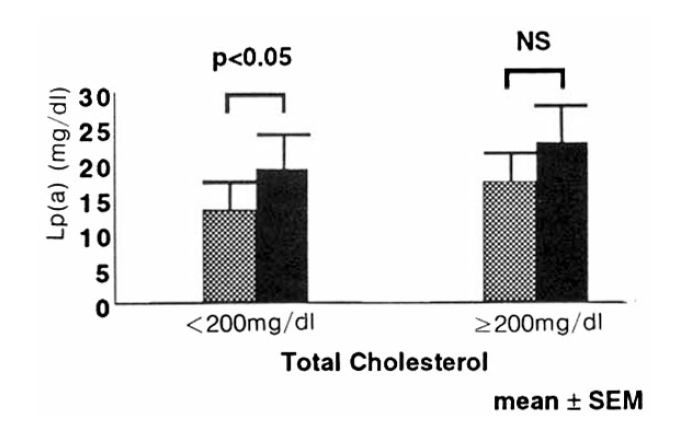
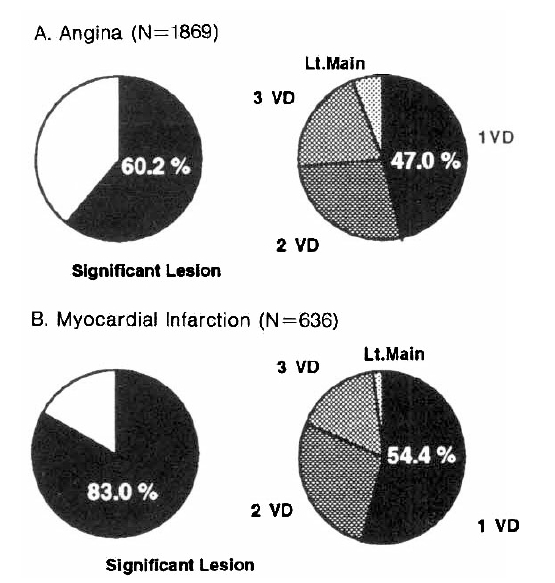
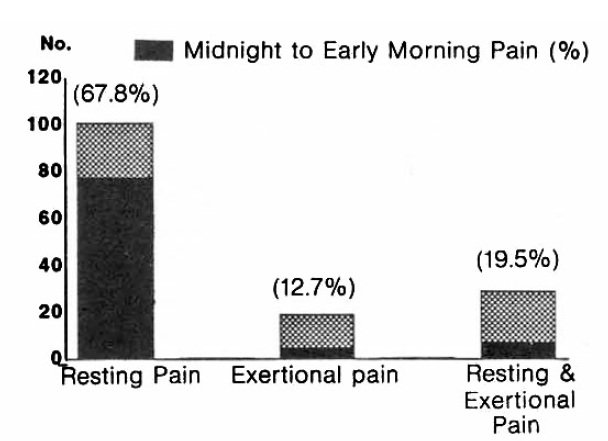

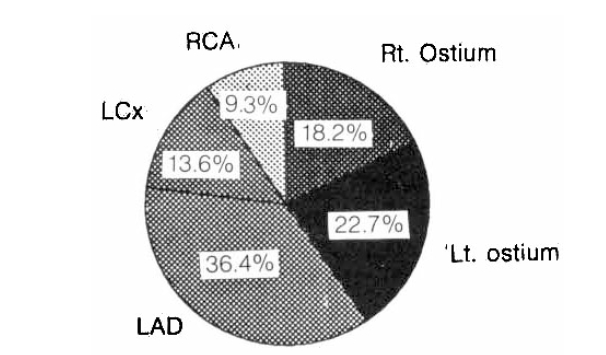
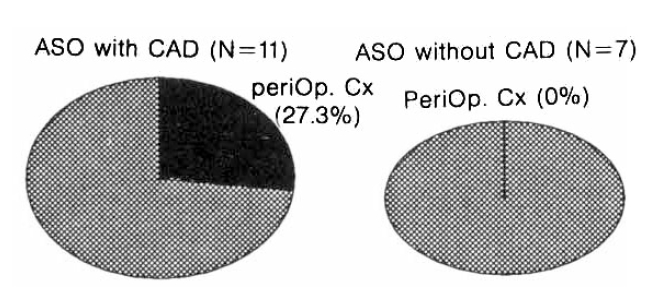
 PDF Links
PDF Links PubReader
PubReader ePub Link
ePub Link Full text via DOI
Full text via DOI Download Citation
Download Citation Print
Print





